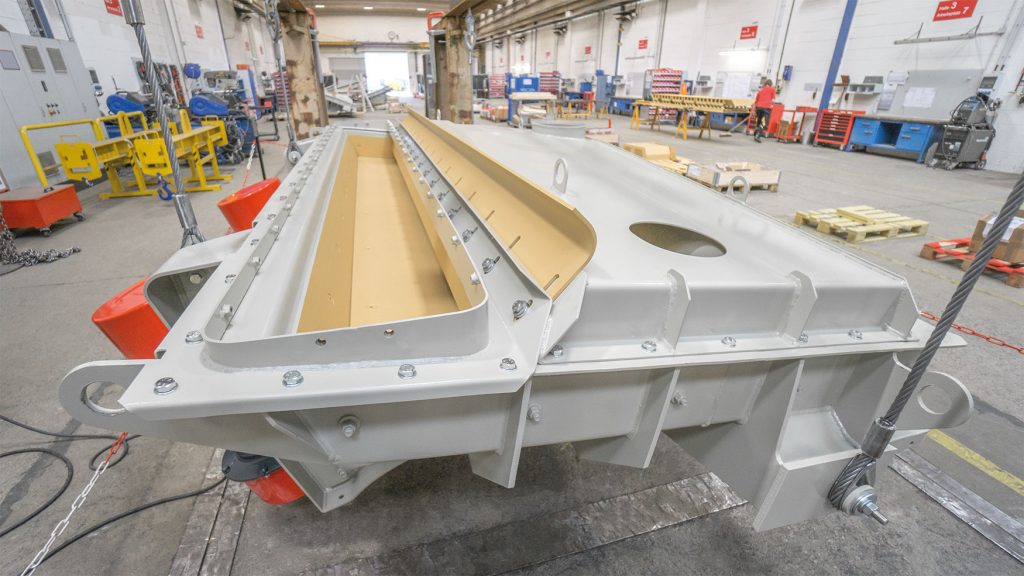MINING, MINERALS & QUARRYING
Handling of iron ore in a small space

In the middle of June 2017 JOEST delivered two hopper discharge feeder with very high process engineering and installation requirements.
The international Mining Company is operating a plant for processing iron ore for several years. For the separation of magnetic components from the fine iron ore fraction, magnetic conveyors have been used so far for feeding the three meter wide sorting devices. These vibrating conveyors extract product controlled from an intermediate storage bin at the same time. Two process steps are handled by one machine.
The geometrical installation situation between bin and sorting device provides a 3 meter wide and only 1.4 meter long vibrating conveyor for each unit, which – also due to further stationary peripherals – must be adapted to the height of the situation. On the one hand, the machine had to be designed in such a way that it regulates the product flow from the bunker, but on the other hand also with stands the head load from the bunker. In addition an even product distribution over the width with low layer thickness must be secured. These process engineering requirements in combination with the structural crowded situation showed technical problems when using the magnetic resonance conveyor technology.
JOEST was selected to design and build an individual hopper discharge feeder in massive construction. Due to the harsh conditions in this mine, a special heavy duty design was required. In this case, unbalanced motors have been used, which can be operated at variable speed in combination with a sufficient power reserve and frequency converter. The flexible use of JOEST standard components ensures high operating safety and long service life. The machine section on the outlet side is in stainless steel because of the magnetic field. Due to the tight space requirement below the machine, the vibrating conveyor is completely displaced by cable suspensions. The drive beam has been slightly moved backwards in order to be able to build the feeder flatter and more compact and to avoid integration problems. Once again the JOEST team made clear that it can work out the right solution for every customer.
Weitere Beiträge
As part of the JOEST group, MOGENSEN has been a trusted provider of high-performance screening and sorting technologies for many years. The new website now showcases this expertise more clearly and with a modern touch.
On International Women’s Day, we celebrated the great women in our company who have made a significant contribution every day with their commitment, expertise and passion. Their efforts have been a driving force behind our success and an inspiration to us all.
JOEST South Africa was commissioned to manufacture and supply replacement vibrating feeders for a critical power generation facility. The new units are designed to replace equipment that had been in operation for over 20 years, ensuring the continued reliability and efficiency of the plant.
MOGENSEN joins China’s food security project as an official supplier, supporting the nation’s plans to strengthen domestic grain production capabilities. The appointment by COFCO, China’s largest state-owned agricultural company, includes the deployment of multiple precision screening systems for processing rice, wheat and soybeans, among other grains. This long-term initiative is in line with China’s new food security law, which went into effect on June 1, 2024.





